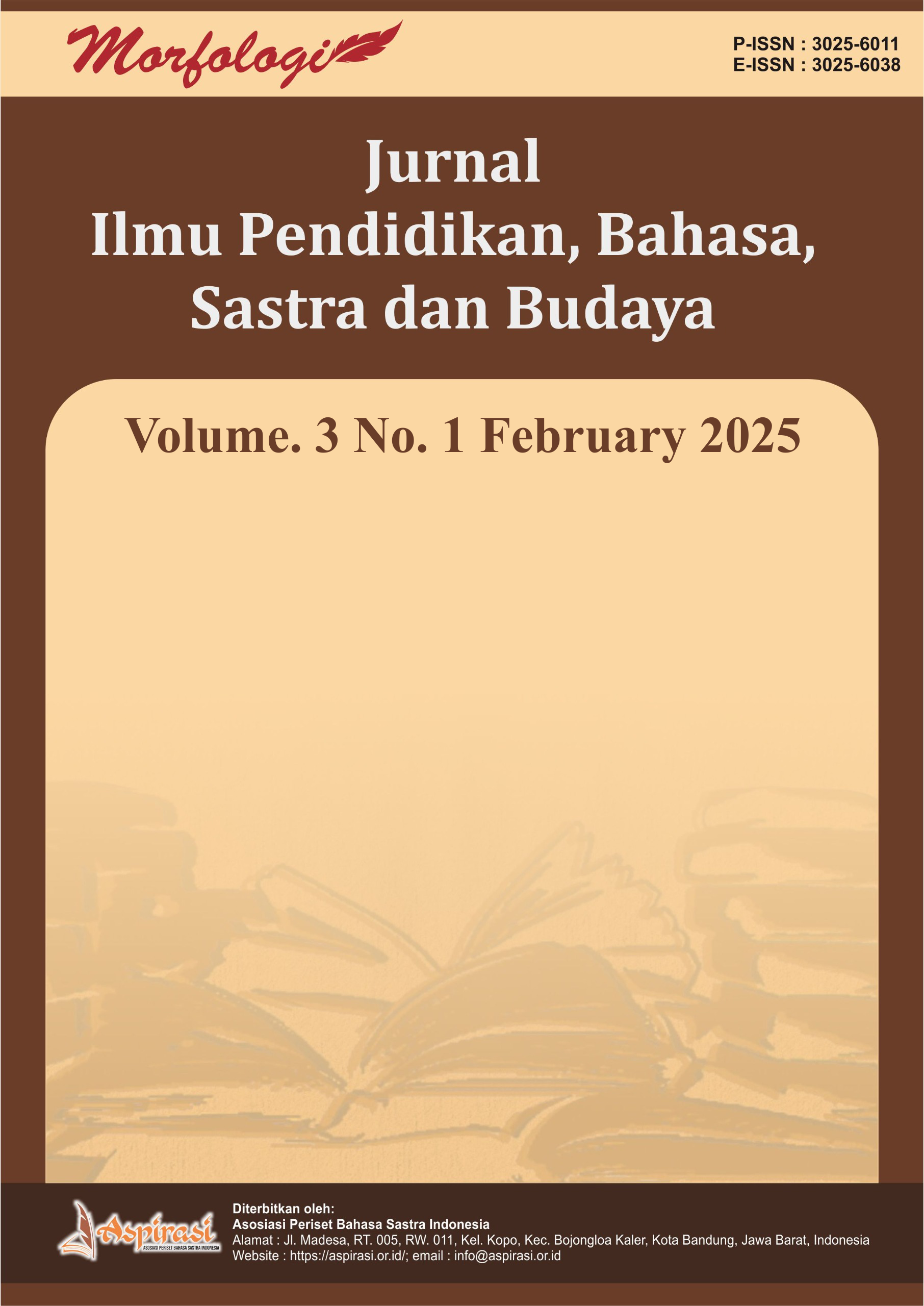Relevansi, Efektivitas, dan Pengaruh Sastra Anak dalam Perkembangan Anak di Indonesia
DOI:
https://doi.org/10.61132/morfologi.v3i1.1234Keywords:
children's literature, child development, cultural relevance, educational effectiveness, IndonesiaAbstract
This research examines the aspects of relevance, effectiveness, and impact of children's literature on the development of children in Indonesia. In the ever-evolving digital era, this study investigates how traditional children's literature continues to maintain its significance for contemporary generations. The methodology used includes a comprehensive analysis of existing literature, interviews with education experts, and observations of children's literature consumption patterns. The main findings indicate that classic children's literature maintains its relevance through the transmission of universal values and cultural heritage, as well as through adaptation into contemporary formats. The effectiveness of children's literature is proven in the improvement of literacy skills, emotional development, and social learning. Recent developments in children's literature show innovative trends, including theme diversification and the use of digital platforms. Furthermore, this research reveals the significant influence of children's literature on various aspects of development, including cognitive, emotional, social, and the formation of cultural identity. Children's literature serves as a catalyst in stimulating imagination, enriching vocabulary, and facilitating understanding of emotional complexities and social dynamics.The implications of this study emphasize the importance of integrating diverse children's literature into the education curriculum, as well as collaboration between educators, writers, and other stakeholders to create relevant and impactful content. Recommendations for future research include a deeper exploration of the long-term effects of children's literature exposure on individual development, as well as an investigation into the potential of children's literature in addressing contemporary issues such as digital literacy and global awareness.
Downloads
References
Abidin, Y., Mulyati, T., & Yunansah, H. (2021). Representation and inclusivity in contemporary Indonesian children's literature. Journal of Children's Literature Studies, 15(2), 45-62.
Bishop, R. S. (2019). Mirrors, windows, and sliding glass doors. In M. Reese (Ed.), Perspectives on children's literature (pp. 23-35). Routledge.
Dewayani, S. (2020). Local wisdom in Indonesian children's literature: Enhancing contextual learning and cultural identity. International Journal of Indonesian Studies, 7(1), 78-95.
Erstad, O., Flewitt, R., Kümmerling-Meibauer, B., & Pires Pereira, Í. S. (2019). The Routledge handbook of digital literacies in early childhood. Routledge.
Kümmerling-Meibauer, B. (2015). From baby books to picturebooks for adults: European picturebooks in the new millennium. Word & Image, 31(3), 249-264.
Mar, R. A., Tackett, J. L., & Moore, C. (2020). Exposure to children's literature across childhood and empathic development. Scientific Studies of Reading, 24(2), 103-116.
Mol, S. E., & Bus, A. G. (2021). To read or not to read: A meta-analysis of print exposure from infancy to early adulthood. Psychological Bulletin, 137(2), 267-296.
Muakhir, A. (2019). Negotiating global and local: Identity construction in contemporary Indonesian children's literature. Asian Studies Review, 43(2), 268-285.
Nikolajeva, M. (2016). Children's literature comes of age: Toward a new aesthetic. Routledge.
Nurgiyantoro, B. (2018). Sastra anak: Pengantar pemahaman dunia anak. Gadjah Mada University Press.
Pratiwi, N., & Ariesta, R. (2022). Digital platforms and the distribution of children's literature in Indonesia during the COVID-19 pandemic. The Indonesian Journal of Communication Studies, 15(1), 31-48.
Sarumpaet, R. K. (2019). Pedoman penelitian sastra anak. Yayasan Pustaka Obor Indonesia.
Stephens, J. (2018). Ideology and identity in contemporary children's literature. Routledge.
Suyatno, S., & Santosa, A. B. (2017). Cerita rakyat sebagai sarana pendidikan karakter dalam pembelajaran sastra anak. Jurnal Pendidikan Bahasa dan Sastra Indonesia, 6(1), 54-67.
Unsworth, L. (2017). Digital literature for children: Texts, readers and educational practices. Peter Lang.
Widodo, H. P., Budi, A. S., & Wijayanti, F. (2020). The impact of extensive reading on EFL primary school students' vocabulary acquisition and reading comprehension. TEFLIN Journal, 31(2), 181-201.
Yokota, J., & Teale, W. H. (2016). Picturebooks and the digital world. The Reading Teacher, 69(5), 509-512.
Downloads
Published
How to Cite
Issue
Section
License
Copyright (c) 2024 Morfologi: Jurnal Ilmu Pendidikan, Bahasa, Sastra dan Budaya

This work is licensed under a Creative Commons Attribution-ShareAlike 4.0 International License.





